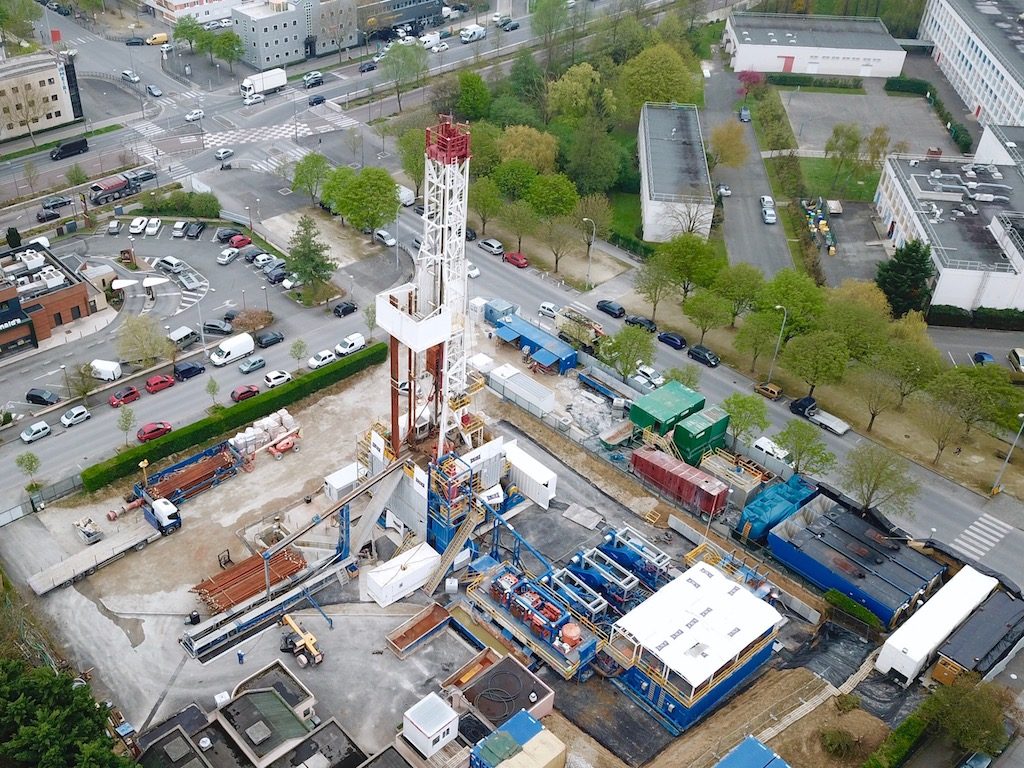New anti-corrision well concept validated at geothermal project in the Paris Basin
French engineering consultancy GPC Instrumentation Process (GPC IP) successfully completed a new anti-corrosion, fiberglass lined, production well at the site of a geothermal heating project at Bonneuil-sur-Marne (Paris southern outskirts) in France.
French engineering consultancy GPC Instrumentation Process (GPC IP) announces a new milestone and success in smart well architecture.
Last week, the company successfully completed a new anti-corrosion, fiberglass lined, production well at the Bonneuil-sur-Marne (Paris southern outskirts) geothermal district heating (GDH) site operated by SETBO, the local, city managed, heating company.
The, 2,020 m deep -38° slanted, well combines a large (20″x13″3/8) steel cased propping column and a twin (13″3/8 x 9″5/8) fiberglass production liner assembly, the casing x liner annulus being kept free (i.e. not cemented), a design initiated in 1985 on the emblematic Melun l’Almont GDH well GMA4, completed though via a simplified architecture (single 13″3/8 casing/9″5/8 fiberglass liner) and production (self-flowing) mode (P.Ungemach – 1994. A New Geothermal Well Concept. IGA News. Quat. 20; Jan. March 1995 pp.12-13). This former experience validated the fiberglass lining concept with respect to material aging (no fiberglass wheep nor destructuring), well integrity (no heavy duty workover and no acidizing so far), reduced maintenance (only one master valve change), well productive performance (artesian, non-sustained, 300 m3/h flowing rate under 2 bar well head pressure), in spite of below bubble point self-flowing production and related fluid degassing.
Present well architecture addresses an artificial lift, pump sustained, production, which implied significant design modifications, chiefly:
- an upper, wider (13″3/8 OD – 97” ID) liner section acting as a pumping chamber, sized to accommodate a 500 HP rated ESP, placed under compression between the wellhead and the lower section;
- a lower and slimmer (9″5/8 OD – 7.74” ID ), freely suspended production liner;
- a (13″3/8 x 9″5/8) liner connecting system, placed at the (20″ x 13″3/8) casing interface, allowing for a free annular fluid (a make-up corrosion inhibitor agent) passage, indeed a key issue, and,
- a wellhead expansion spool.
The additional capital investment costs (ca 20% compared to a conventional 13″3/8 x 9″5/8 steel cased well architecture) will get payed back in less than eight years thanks to yearly OM costs savings.
Given the foregoing, it is expected this, smart well, material answer to thermo-chemically hostile corrosive fluid environments, elsewhere securing well longevities and low operation/maintenance (OM) costs, raises due interest among geothermal operators and stakeholders.
The project, due to its innovative impact, was awarded financial support from ADEME, the French Environmental Agency.
Source: company release by email


















